It’s hard in this day and age to look for a more compact Android device unless you’re willing to compromise on performance or battery life or even usability at least look to Apple with its iPhone SE or Mini range for a more compact and manageable device.
So when ASUS announced the launch of the newest compact high-end Android device, the Zenfone 9, we wanted to see if this latest iteration of the Zenfone lineup and successor to the Zenfone 8 – which was sadly flawed – would improve the Zenfone experience whilst improving on last years flagship from the Taiwanese computer conglomerate.
So can the Zenfone 9 improve over its little brother from last year and improve the compact experience without the need to jump to iOS for a compact device? Let’s have a look shall we.
Inside the Box
In the box, you get the device, the Zenfone 9, a hard plastic back cover for the device, 1-metre USB-C to USB-C cords, a wall charger which is a 30-watt charger, SIM Tool and a small instruction booklet.
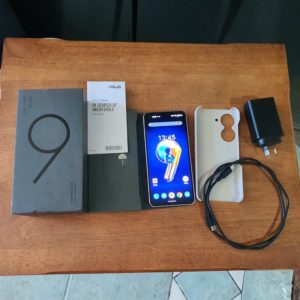
The Design
The Zenfone 9 is certainly a chunky monkey coming in at 146.5 x 68.1 x 9.1 mm @ 169g but it doesn’t feel overly heavy in your hand, in fact, it does feel quite light in the hand. To show the difference in size, I have below my Galaxy Note 10+ and TCL 10L below against the size of the Zenfone 9.
Taking the device out of the box, my first thought was about the design and, at least for me, seems very similar to the iPhone 4/4s or even the iPhone 5 and whilst normally that could be considered a bit of a copycat move, I have to say the changes and refinement ASUS have made certainly makes sure there isn’t any copycat kind of feeling.
The front of the Zenfone 9 comes with a 5.9-inch Samsung AMOLED display that comes with a 120Hz refresh rate and an 1100 nits maximum brightness. I have to say the display is just utterly beautiful and not overly bright. It certainly doesn’t compromise on quality, clarity and usability.
The front display also utilises Corning Gorilla’s latest Glass Victus so scratches or marks shouldn’t be an issue with the display.
The front left side of the display contains the front-facing 12 MP Sony IMX663 flagship sensor with the speaker grill above this at the top of the display. The bezels are impressively thin, except at the bottom of the device which has a slightly thicker bezel chin but this doesn’t detract from the overall look of the device.
The sides of the device are made of aluminium which certainly gives the device a premium feeling and does compliment the display of the device. The sides have been ever so slightly curved and don’t feel jagged like many other devices that have tried this type of build.
The right-hand side of the device contains the volume rocker with the power/standby and a fingerprint sensor beneath the volume rocker. The top of the device houses the 3.5mm audio jack for those that still prefer a headphone jack.
The bottom of the Zenfone 9 houses the USB-C port in the centre and on the left-hand side housing the dual SIM tray port and on the right the rear speaker grill. Turning to the rear of the Zenfone 9, it seems to be made from a polymer plastic housing but is more a soft touch matte type of plastic, and I have to say I do like it as I find this will hide the usual fingerprint marks much better.
The rear also houses the two rear-facing cameras, which do stick out thanks to their housing. The main lens, which is made up of a 50 MP Sony IMX766 flagship sensor lens, sticks out by about 2mm from the rear, whilst the second camera, made up of a 12MP Sony IMX363 flagship sensor, sticks out of the rear by about 1mm. Next to the camera lens is the single LED flashlight.
Furthermore, the Zenfone 9 comes with an IP68 water resistance rating, meaning if your do get the device a little bit wet or at least get sweaty whilst working out, then the Zenfone won’t crash out on you.
Performance, Software and Battery Life
Under the hood, The Zenfone 9 is powered by Qualcomm Snapdragon 8+ Gen 1 Mobile Platform processor followed by a Qualcomm Adreno 730 GPU, with 16GB of RAM and 256GB of onboard storage. Sadly there is no way to expand the memory via MicroSD, so you will need to ensure you have enough cloud storage.
The Zenfone 9 comes with Android 12 right out of the box and during the review period, there were some security updates that were rolled out and installed on the device. ASUS haven’t put many or tweaks to the stock Android which is good to see.
Navigating on the Zenfone 9, ASUS does give you a couple of options, with one option being to double tap twice on the back of the device however if you use the included back cover, this doesn’t always work so the second option is to swipe up or down on the combined standby/fingerprint scanner to navigate around the device.
The Zenfone 9 comes with a full range of connectivity Wi-Fi 6/6E (802.11 a/b/g/n/ac/ax, 2×2 MIMO) and also supports Tri-band 2.4 GHz / 5 GHz/ 6 GHz Wi-Fi and connecting to my home Wi-Fi the connection was always strong with no dropout or issues.
The Zenfone 9 also comes with 5G connectivity, unfortunately, my provider doesn’t yet have good coverage out here. I can confirm though, that the 4G connectivity was strong, but this will depend on your telco connectivity at the end of the day. For those who asked about VoLTE, whilst there is a setting to turn this on, trying to use it with both my Optus and Telstra SIM Cards, I couldn’t get the device to use this option meaning you are at the moment limited to Wi-Fi calling and 3G/H+, and I am sure if this is why there could be a delay in launching the product here. To me this is extremely disappointing given the 3G networks here in Australia are being phased out in favour of 4G and more so 5G technology bands
The Zenfone 9 also comes with NFC and it could seem NFC is only available to use when you point the device towards the back left-hand side of the device, but it does work, and I had no issues using this feature when making payments when out and about.
The Zenfone 9 comes with a 30-watt charger which should at least give you a full battery if put on charge overnight. During the day for top ups the charger should also be able to get you to 100% charge in a couple of hours.
Talking about the battery power, the Zenfone 9 comes with a 4,300mAh battery which you would think is small, but given the device does have a smaller screen and due to some optimisations, the battery power doesn’t suffer as much, with the battery able to last the day with medium to some high usage.
Lights, Camera, Action
As noted, the Zenfone 9 comes with 2 rear cameras, with the main camera being a 50MP Sony IMX766 flagship sensor whilst the second camera is an ultra wide 12MP Sony IMX363 flagship sensor. The main 50MP camera lens has a 6-Axis hybrid gimbal stabiliser inbuilt into the camera which in theory or at least on paper should help reduce any blur or at least shaking in videos and I have to say it does work as I did notice pics taken with the rear cameras not as blurring or needing to take so many multiple shots just to get the right one.
Camera modes on the Zenfone 9 include Photo, Video, Portrait, Pro (RAW file support), Pro video, Light Trail (which is beta phase), Panorama, Night, Timelapse and Slo-mo.
Photo’s taken with the rear camera set up seem at first ok, but did notice a couple of issues, with some photos just seeming either flat or slightly over-saturated, but also the second issue pertains to when you have taken a photo, make sure you don’t move the phone until it is saved or fully taken as this did lead to some slightly blurring photos after taking them, but they hadn’t been fully captured.
Furthermore, there is no Zoom, so you will need to be as close as possible to a person as trying to take close up photos from a distance even using what little zoom options and then trying to manually zoom in further does result in much more grainy and lower quality photos.
The front-facing camera is made up of a 12MP Sony IMX663 flagship sensor camera, which is ok for those flawless selfies, but the ability to try and take a selfie in low to extremely low light conditions does mean pictures do end up being very grainy, quite dark and just utterly useless.
Should you consider buying one?
All in all, I have to say there is a lot to like with the Zenfone 9 and if you’re after a device that offers what a flagship massive smartphone does in a much more compact design, then the Zenfone 9 could be what you are looking for.
The only thing I would really like ASUS to address is the cameras, which whilst producing decent quality photos in good light, they do seem to suffer from a under or in variable light conditions. Honestly, using the cameras in low light is terrible when you look at devices like the Pixel 6, Pixel 6 Pro and the Pixel 6a, to even the Samsung Galaxy S22 range, which has cameras that can perform a bit better under the most extreme low light settings, I feel this is the Achilles heel for the Zenfone 9.
That being said, the camera under the right conditions does perform quite well, and the hardware, to the software and user experience, is flawless, it is just the cameras or camera software might need a bit of a revamp or at least a redesign.
In terms of availability and pricing, ASUS haven’t provided any details, retail pricing or availability for the Zenfone 9, however, it is Ausdroids understanding that the Zenfone 9 could be around the same if not similar pricing to the current Zenfone 8 device of 2021. If it is the same price or at least close to, then it could be worth it but without pricing, I honestly can’t say either way if it is worth forking out for the Zenfone 9.
We will update this review once pricing and availability do become available.

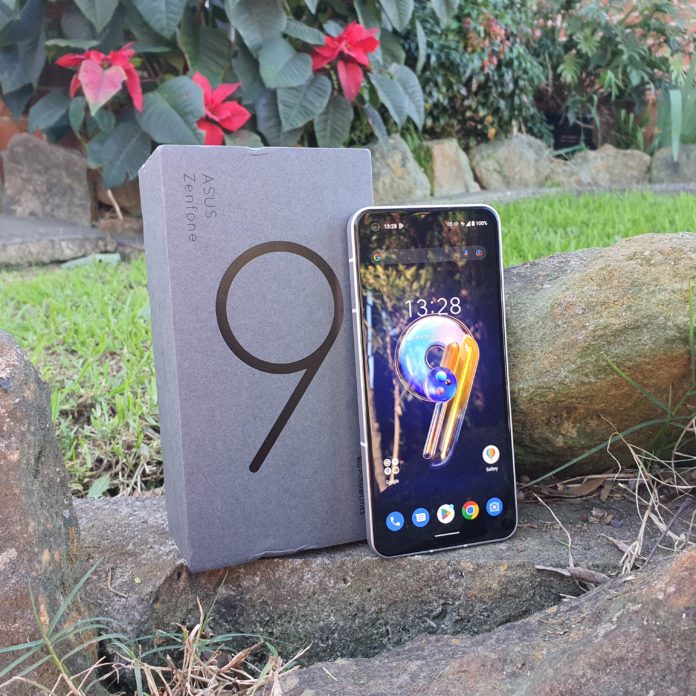


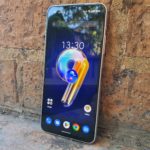
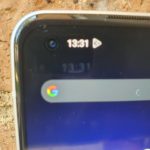
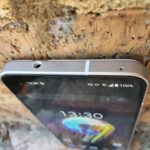
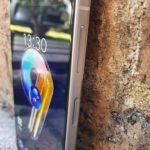
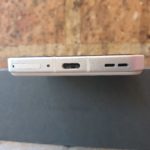
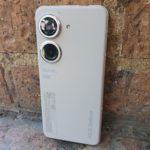




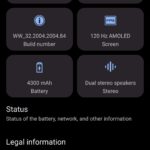











Maybe not the best camera, but otherwise a great phone. Very refreshing in a world with massive phones everywhere.